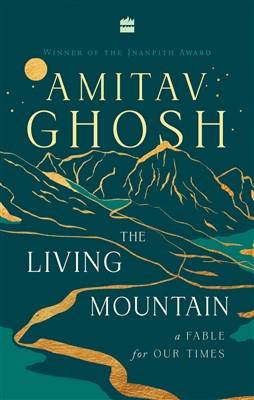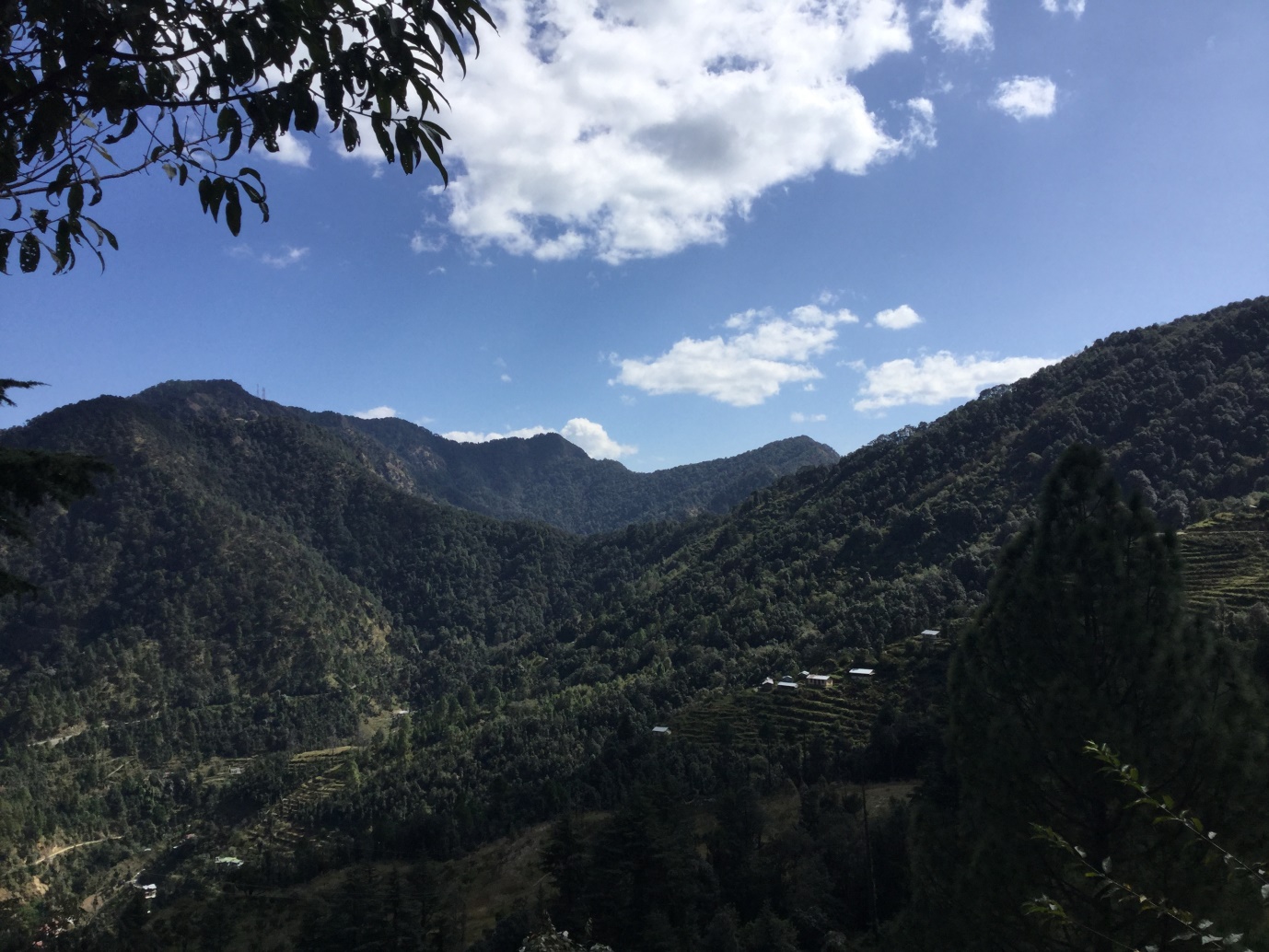Opening the courier packet, I was disappointed with how slim the latest book from Amitav Ghosh, The Living Mountain: A Fable of our Times, was. At 35 pages, it was perhaps the shortest book for me. I read it in one sitting that evening.
Short in its narrative, the book is long in its reach. Like Ernest Hemingway’s The Old Man and the Sea, John Steinbeck’s The Pearl, or Richard Bach’s Jonathan Livingston Seagull, the dream story in the book is an allegory for a universal environmental history starting from animism, through colonialism, globalisation, neo-classical economics, to the current climate change discussions.
A circular dream
At the heart of The Living Mountain is a dream. Or perhaps not even a dream, but an archetypal memory. Maansi, whose recollection of the dream is the story, says, “When I fell asleep, I had the most horrible dream – except that I don’t even know whether it’s my own dream or a memory of a story that I heard from my grandmother.”
The story is from a valley in the Himalayas, where many villages fight and live under the shadow of the great snow-peaked mountain, the Mahaparbat. The villages fight among themselves but are particular about two truths. One, Mahaparbat is a living mountain, that talks to the adepts in the villages, and thus, should never be climbed upon. Two, people from outside these communities are not permitted into the valley. The village residents trade with them once a year, at the entrance of the valley, exporting nuts of their magic tree and other produce and importing what they need for the entire year.
It is in one such contact that they meet the representative of a different race – the Anthropoi – who takes copious notes about Mahaparbat and the produce in the valley. A couple of years later, the Anthropoi return, this time with modern military equipment and subjugate the people of the valley.
“Their savants had studied all that was told to their envoy, and they were convinced that unbeknownst to us, great riches – minerals, metals and the like – were hidden within the mountain,” Maansi says in her monologue which is the narrative of the story. “We were unaware of this because we were a credulous and benighted people, who believed that the Mountain was alive. The savants of the Anthropoi were unmatched in their wisdom, and they had decided that since we were not making use of the mountain’s riches, they were fully justified in seizing them and taking whatever they wished.”

The Anthropoi and their helmeted soldiers – Kraani – dismiss the village elders and prevent the adepts from practising their skills. The Anthropoi begin the assault on Mahaparbat, with the villagers of the valley providing support with provisions and as porters. Under the Kraani’s supervision, they also toil in their fields to grow more food for the assault.
Watching the Anthropoi climb Mahaparbat, the villagers lose the reverence they have for the mountain. “Gradually, as the spectacle took the place that the mountain had once occupied in our hearts, we burned with the desire to ascend those slopes ourselves.”
Encouraged by their elders, the villagers began to defy the Kraani, at times putting their tools down and not cooperating in their work. One day, the Kraani return to their lands, having taken enough riches from the mountain slopes. The villagers assault the mountain for the remaining riches, capturing amongst themselves to get the labour for the assault. The destruction that the villagers bring upon the mountain is more than that by the Anthropoi.
As the villagers reach the summit, the Anthropoi savants signal them from the valley. Landslides and avalanches start on the slopes. With these disasters, the savants of the Anthropoi start talking with the villagers. They tell the villagers that the ice of the mountain can support only a small number of climbers.
The disasters, the Anthropoi explain, is because of the villagers, since too many of them are climbing the mountain. “If you observe us carefully enough you will see that we are learning new ways to climb so that we tread lightly on the mountain. This is what you must do – you must start climbing in the old, bad way.”
With the foreboding of more disasters in the future, the Anthropoi join the villagers in an effort to protect themselves. Their savants tell the villagers, “there was some wisdom in your beliefs after all. Can you please tell us your old stories, sing us your old songs, show us your dances – so that we can determine whether your mountain really is alive or not.” But then there are no adepts left, except for one.

Builds on two previous books
Though The Living Mountain is a work of fiction, it is a continuation to two recent non-fiction books that Ghosh wrote relating to climate change and the environment –The Great Derangement: Climate Change and the Unthinkable (Penguin Allen Lane, 2016) and The Nutmeg’s Curse: Parables for a Planet in Crisis (Penguin Allen Lane, 2021). Even in his earlier work of fiction, Ghosh has woven in the ecosystems in which the stories happen. If the Gangetic plains appear in some strongly, the mangrove swamps of the Sundarbans appear in a few others.
In The Great Derangement, Ghosh wonders why fiction writers do not build climate change into their narrative, while it portends to be a major crisis in the future. He asks why the impacts of climate change only find mention in science fiction. Without climate change attracting the collective imagination of writers it would be difficult to develop a collective cause against it, he argues.
“There is something confounding about this peculiar feedback loop,” he writes in The Great Derangement. “It is difficult to imagine a conception of seriousness that is blind to potentially life-changing threats. And if the urgency of a subject were indeed a criterion of its seriousness, then, considering what climate change actually portends for the future of the earth, it should surely follow that this would be the principal preoccupation of writers the world over – and this, I think is very far from being the case.”
The crux of Ghosh’s argument in The Great Derangement is that climate change is too large an issue to be dealt with by individual choice. It would require strong international political will to make changes in the system of natural resource use, abuse, and exploitation. And this is the theme that he elaborates in The Nutmeg’s Curse. Woven slowly and deliberately through the 257-page narrative of this book, Ghosh starts with the violent Dutch colonialism in Indonesia and ends with the present-day geopolitics related to fossil fuels and their links to climate change.
Why is all this the nutmeg’s curse? The trees that offer nutmeg and mace as spices to the world were endemic to an archipelago in Indonesia, and the Dutch colonialists not only wanted the resource to themselves but wanted the original Bandanese inhabitants of the islands out of their lands. They were tortured and executed when they resisted.

Like tracing the course of a river from one of the innumerable streams that join to form it, Ghosh traces the history of colonialism from this 17th Century incident from Indonesia. If spices drove the geopolitics of the colonial era, fossil fuels are their equivalents in the present day, argues Ghosh in The Nutmeg’s Curse.Just as how spices could be collected and transported across the world, fossil fuels too can be shipped or piped across countries.
“Like coal, oil by its very nature has come to be enmeshed with global hierarchies of power in other, more elusive ways, creating vested interests that are neither economic nor enumerable,” Ghosh writes in The Nutmeg’s Curse. “This has come about because of another aspect of the materiality of petroleum – the simple fact that it must be moved, by ship or pipeline, from its point of extraction to other places. Out of this arises a geopolitical dynamic that leads directly back to the conflicts that revolved around cloves and nutmegs.”
A country’s fossil fuel use, military might and carbon footprint are directly related, states Ghosh. “The job of the world’s dominant military establishments is precisely to defend the most important drivers of climate change – the carbon economy and the systems of extraction, production and consumption that it supports.”
It is here that Ghosh finds promise in renewable energy. Growth in renewable energy across the globe can alter this fossil fuel-led global order, and also unlock choke points that transportation of oil, gas and coal are vulnerable to. “Energy derived from sources like the sun, air, and water, on the other hand, is imbued with immense liberatory potential. In principle, every house, farm, and factory could free itself from the grid by generating its own power. No longer would long power lines and gigantic, leak-prone tankers be needed for transportation of energy; no longer would workers have to toil in underground mines or in remote deserts and rough seas; there would be no need for the long supply chains required by fossil fuels.”
Permanent colonialism
The Living Mountain comes at a time when the Ukraine War has dramatically disturbed the global supply chain for fossil fuels. The severe waves of the COVID-19 pandemic in 2020 and 2021 disturbed the established systems across the globe and put to question the wisdom of the market economics that most countries follow.
It is also a time when the world is getting tired and restive with the never-ending hoops that the international climate change negotiations are going through. With every country having to declare their nationally determined contributions towards climate change mitigation, the Paris Agreement of 2015 has almost destroyed the differentiation between developed and developing countries, which was the cornerstone of the earlier negotiations’ regime. While this is so, the discussions on climate finance from developed to developing countries are hardly moving.
There is much popular resonance to what historian Vijay Prashard articulated at the People’s Summit during the Climate Change COP26 in Glasgow, the U.K., in November 2021. There was also popular support for the youth movement, led by Greta Thunberg, as they protested against hard decisions not being taken at COP25 in Madrid, Spain in 2019.
The dream story in Amitav Ghosh’s latest book builds into this narrative of permanent colonialism. It is a simple story that weaves deep insights.
There is one aspect in which The Living Mountain differs from The Old Man and the Sea, The Pearl and Jonathan Livingston Seagull. While the message of persistence is clear in Hemingway’s work, the disasters that befall those communities where mineral wealth is discovered in Steinbeck’s, and the quality of perfection in Bach’s, it is easy for a reader unaware of the global politico-environmental discussions to miss what Ghosh is driving at.
The article has been written by S. Gopikrishna Warrier. He is an environment journalist with years of experience in communication in Asia and Africa. He is also the Managing Editor, Mongabay-India. The article was originally published in Mongabay.














